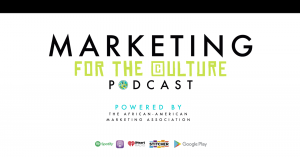Do you leverage digital events (like webinars) to connect with consumers and generate leads?
Yes?
That’s great! Many smart marketers do this.
However, investing resources in a marketing strategy without determining proper goals and metrics is a waste of time and resources. If you need clarity on the key metrics you should monitor to evaluate your digital events, read this post carefully.
6 Metrics to Use to Evaluate Digital Events
There are many ways to assess the performance of digital events, depending on your end-goal. Still, a few metrics are standard, regardless of the objective. Let’s take a look at these key metrics:
1. Click-Through Rate (CTR)
You may be promoting your event on different channels.
In the promotional posts, you include calls-to-action (CTAs) to compel people to click and redirect them to your event landing page. Your CTR is the number of clicks that each CTA generates.
CTR-tracking provides insights about targeting and CTAs that work on your target audience.
2. Registration Volume
Getting many pageviews on your landing page is excellent. But how many people take the time to go through the page copy, fill out the registration form, and hit the “Register” button? This is indicated by the registration volume metric.
It’s essential to keep a tab on this metric as it highlights what kind of landing page copy and design appeals to your audience.
3. Registrant-to-Attendee Conversion Rate
Not all the people who register for the event will eventually attend it. Unless people turn up at the event, you can’t call it a success.
Determine the registrant-to-attendee conversion rate to get the percentage of registrants who show up at the live event. This also includes the on-demand-version.
4. Average Viewing Time
Getting a substantial participant turnout is always a great feeling, but the real win is keeping people glued till the end. Measure the average viewing time to get a fair idea of how engaging your event is.
If there are too many drop-offs, you may need to rethink your content and presentation style.
5. Engagement Rate
Engaged attendees convert faster. How actively engaged are your attendees? Which activities do they participate in enthusiastically? Which tools produce the best and most results?
To draw these insights, track the engagement rate of each engagement tool you deploy in the event. Then, replicate the successful strategies in your future events.
6. Return on Investment (ROI)
All marketing tools, including digital events, should raise your bottom line. To evaluate the profitability of your events, calculate the ROI they generate. This will help you justify the resources and time you invested in hosting them.
Need More Information?
By tracking the above six key metrics, you can convert your digital events into bankable marketing tools.
Want to learn more about the measurement of event ROI? Read this infographic created by FLOW, a leading webinar management platform:


Belal Atiyyah CEO, Omnovia Technologies Inc
Belal has had a 30-year international business career spanning energy and technology. He has a BEng in Electronic Systems and a Masters in Business. His passion is strategic problem solving through technology.
